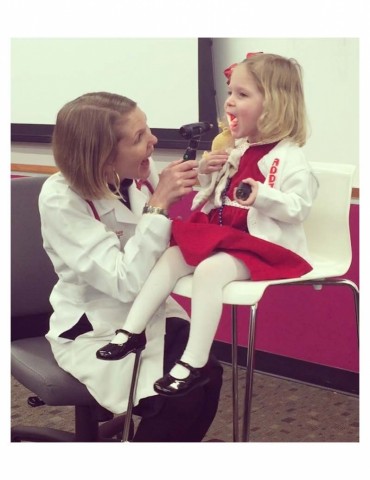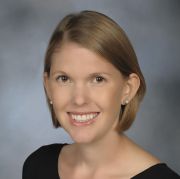As a little girl, my friends and I would line up my stuffed animals and listen intently to their hearts and tummies, check their ears for hidden treasures, and diagnose a plethora of make-believe health problems during the process. Childhood entertainment found in my hometown in Eastern North Carolina was often limited to outside play and imagination rather than on-demand movies, home computers or social media platforms frequently found today. I often think that those innocent, imaginative games laid the foundation for my appreciation of working on a team and fostered my on-going commitment to caring for, and serving, others. As young children engaged in magical play, we shared a common goal of “caring” for our make-believe friends. While our skill sets were questionable by today’s standards, we were confidant and committed to working together to improve the outcomes of those battered stuffed animals—we were a team.
The terms “interdisciplinary team” and “interprofessional education” are found in the literature of major accreditation bodies and funding sources and are also terms used in a variety of learning institutions and healthcare settings each day. We have all been charged with teaching interdisciplinary teamwork in our respective curriculums, yet how we do that, and if we do it effectively, varies widely given the many confines of our professions, institutions and regions.
I often describe my interactions with colleagues as being similar to toddlers actively involved in parallel play. We are all in the same sandbox and all playing in the same sand. A person with limited knowledge of childhood development might say to themselves, “look at those kids playing together so well.” However, if the same person looked at the sandbox a little more closely, they would discover that there is often limited communication, or even interaction, from one child to the next—a hallmark sign of parallel play in toddlers. Perhaps many of you have had similar experiences in the grown-up sandboxes of health sciences education and/or health care delivery. As a young nurse educator entering into Harvard Macy, I struggled with the best way to teach a behavior that I found extremely difficult to emulate in my own practice and educational settings. I came to Harvard Macy in the hopes of understanding the best ways to break down the traditional hierarchical relationships that often result in parallel play.
The Harvard Macy Program for Educators in Health Professions has provided me with an incredible learning environment to ask such questions. The scholars represent a variety of disciplines, ages, ethnicities and personalities and most importantly, we all share the common goal of working to improve the delivery of health education, and ultimately, healthcare. After an intensive first session, I left Boston without a clear set of guidelines of how to effectively implement an interprofessional educational curriculum at my home institution. I think most of us agree that there isn’t a “one-size-fits-all” evidence based guideline on how to deal with scheduling, technical and financial constraints that vary across institutions.
Although I didn’t leave with exactly what I was looking for, the “how-to” of interprofessional education, I left with something much more valuable, the “why?”. Harvard Macy scholars and faculty address each other by first name, official titles are left off nametags, and there is a major emphasis on establishing a culture of respect, trust, and positive attitudes among the group. In our discussions, any idea was possible and every idea was respected. Passionate, motivated individuals came together to share their commitment to the delivery of quality care and measurable outcomes. I came to Harvard Macy understanding that interdisciplinary teams were important but left with a first-hand appreciation of the beauty that can occur when those teams play together in the “sandbox”.
A few weeks ago, my young daughter brought her own stuffed animals into my classroom to teach the art of pediatric assessment to advanced practice nursing students. She directed them to listen to stuffed animal hearts and tummies and look for hidden treasures in their ears just like I did many years ago—I guess some things don’t change very much from one generation to the next. Although we may have looked ridiculous to people passing by, we all worked together as a team to assess those stuffed animals and in the process, we noticed worn spots of fur, variability in ear positioning, and appropriate techniques for listening to hearts. As I turned out the lights of my classroom that day, with a bag of stuffed animals and my two-year-old in tow, I smiled that my focus is no longer to think of overcoming the challenges of interprofessional education and teams; instead, my biggest responsibility is to share the beauty, energy and enthusiasm that comes when it works incredibly well.

I am incredibly humbled to be bound to such a diverse and talented community of Harvard Macy educators and I now have the ability to slowly break down the idea of traditional hierarchical relationships. I am armed with a passion to improve health outcomes in the communities I serve, and perhaps more importantly, with the genuine appreciation of the talent, skills and enthusiasm of my colleagues across disciplines, and around the globe.
Audra N Rankin, DNP, APRN, CPNP


